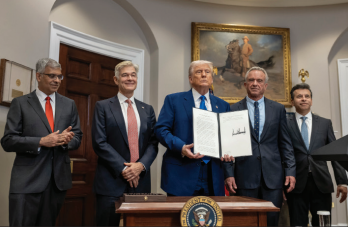
Alongside abortion rights, immigration policies, and climate justice, revitalizing the American economy is one of the many topics defining the 2024 presidential election. As Americans are continuously experiencing the aftermath of the pandemic, extremely high inflation rates and ever-widening socioeconomic disparities across the nation, the economy is a topic on the minds of millions. Whether it be instating child tax credits, or expanding the oil market, both Vice President Kamala Harris and Former President Donald Trump have promised intricate economic plans.
On September 25th, 2024, Kamala Harris and Tim Walz released a 70-page document titled A New Way Forward for the Middle Class in which they express their efforts to bridge the gaps that the average American faces on a day-to-day basis. Harris and Walz’s ambitions include imposing tax breaks for parents of young children based on income and residential area, lowering prescription drug costs, increasing minimum wage, and investing in small businesses, among others, in order to help boost the American economy.
In contrast, The Trump Administration’s plan for the economy largely relies on placing tariffs on international goods. Despite the administration’s emphasis on this pillar of their economic plan, higher tariffs on international goods would likely weaken the United States’ relationship with other nations, and hurt international trade, evident by the US’ 2018 trade war with China. In addition, The Trump Administration intends to expand the oil industry in efforts to lower inflation rates. Through drilling more oil to increase supply and demand, they hope to use revenue collected through tariffs and taxes to lower inflation rates and reduce student debt.
Both presidential candidates feel strongly about eliminating taxes on gratuity tips, despite objections from economists, and expanding portions of the 2017 Tax Cuts and Jobs Act (TCJA). TCJA is a landmark tax law that made major amendments to tax codes, and is currently set to expire in 2025. While Harris is focused on the portion of the TCJA which ensures that “no one earning less than $400,000 a year will pay more in taxes,” Trump is focused on preserving tax cuts for individuals and corporations alike, while also scrapping State and Local Tax Reductions (SALT), a policy which establishes a $10,000 cap on deductions for state and local taxes. The expansion of the TCJA proves to be one of the most expensive parts of each candidate’s agenda. The Harris Campaign plans to spend three-trillion dollars on the project, and The Trump Campaign estimates more than five-trillion.
Trump and Harris hold exceptionally different plans for the future of the United States, and their economic policies are an illustration of this divergence. As November 5th inches closer, and United States citizens prepare to cast their ballots, concerns surrounding the US economy, amongst other issues, are amongst the most prominent things Americans are considering. Each candidate’s plan for the economy is a pivotal campaign choice, a decision that not only affects their success, but the future of the United States.








